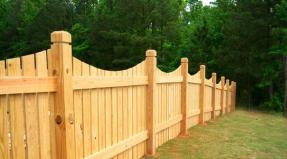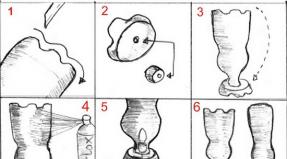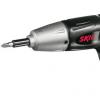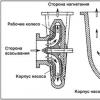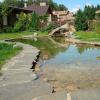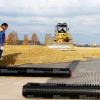WE PLANT A GARDEN Everything you wanted to know about do-it-yourself landscape design
Water in a personal or suburban area is necessary. And if your land does not have a water pipe or a well, but real natural, living water in a spring, stream or lake, then you can consider yourself very lucky. If nature did not take care to decorate the garden with a pond, then many gardeners organize artificial ponds and pools.
But a reservoir is not only a source of water for irrigation, coolness in the summer heat and a delight for the eyes. Water, as you know, sharpens the stone, and even the soil even more so.
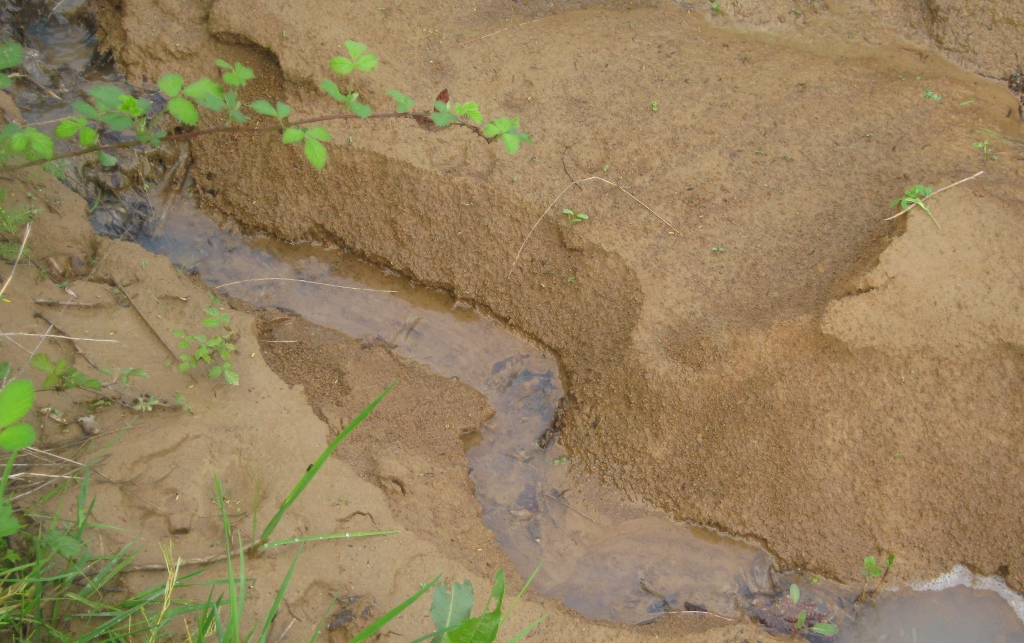
Small streams, pleasing in the spring, can gradually turn into ravines. The slopes of the excavated pond gradually crumble and collapse due to the fact that they are washed away by water, constantly changing its level. Destroy the coast and the processes of the so-called frost heaving, an increase in the volume of soil due to the expansion of the water contained in it when it freezes in winter.

Whatever the origin of the reservoir, natural or artificial, it requires care, first of all, strengthening the coastline.
Strengthening the spring
Let's start with a small reservoir - a spring. If the debit of the spring is sufficient for irrigation, then you need to expand its bowl to a volume of at least a cubic meter. Otherwise, the pump will draw water too quickly. The easiest way to strengthen the edges of the bowl is by installing concrete rings of a suitable diameter. But you can do it much more beautifully. Depending on the availability of material and the overall design of the site, the best materials are wood or stone. The advantages of wood are ease of processing and low weight. Logs can be hammered as piles or made from them like a well. A traditional log house is four-sided, but there may be six sides, which look a little more interesting. The best breed is larch. Oak and aspen are also suitable.
It is more logical to overlay a spring on a site in a mountainous area with natural stone. Preference should be given not to rounded cobblestone, but to stones of an angular shape. In this case, less cement mortar will be required to connect the stones. Ideally, it is better to do without cement at all, picking up stones in such a way that they are firmly held due to frictional forces and irregularities that engage with each other. This is a very long process, but at the same time - creative, akin to the work of a sculptor. Don't rely too much on cement. Hurrying with laying and filling all the voids with mortar, you can get a satisfying result, but after a couple of hours, the masonry will inevitably begin to collapse, as the stones will settle into the ground, and the water that has penetrated between them will break the seams in winter. The advantage of stones is that the spring bowl can be made in any shape, harmoniously fitting it into the existing landscape. Sometimes several springs come out in one place and they can be arranged as a system of bowls with water flowing from one to another.
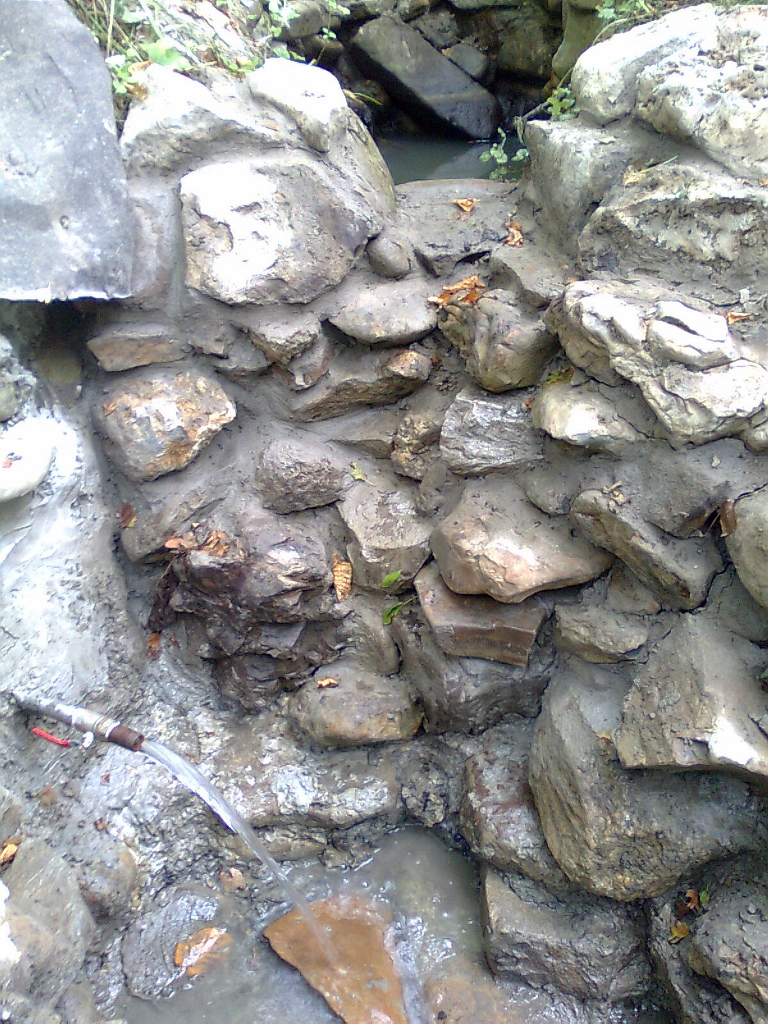
Strengthening steep banks
Strengthening the shores of an artificial pond or lake given to you by nature is a more difficult task. A familiar monolithic builder may recommend that you "place the formwork, pour it and don't sweat it." Don't rush into this technology. Not only will the result be aesthetically uninteresting, but also reliability is not guaranteed. You will have to make very thick walls with powerful reinforcement and compact the concrete with vibrators, but it is very expensive. A monolithic bowl is subjected to enormous loads when the soil freezes, and if it is made according to "dacha" technologies, the question will soon arise of how to clean the pond from pieces of concrete.
Modern methods of strengthening vertical banks are based on three main technologies:
- Larch piles
- PVC dowels
- gabions
Larch in most regions of the country is very expensive. Plastic sheet piles, according to manufacturers, can stand for 50 years at temperatures ranging from minus forty to plus forty degrees. But there are doubts about their environmental friendliness. PVC is still not a completely inert material and will gradually release toxic substances into the water, albeit in small quantities. And what to do with it after the expiration date of use ...? But gabions (grids in the form of parallelepipeds made of durable galvanized wire, filled with coarse gravel or crushed stone) showed themselves very well in strengthening slopes near mountain highways.
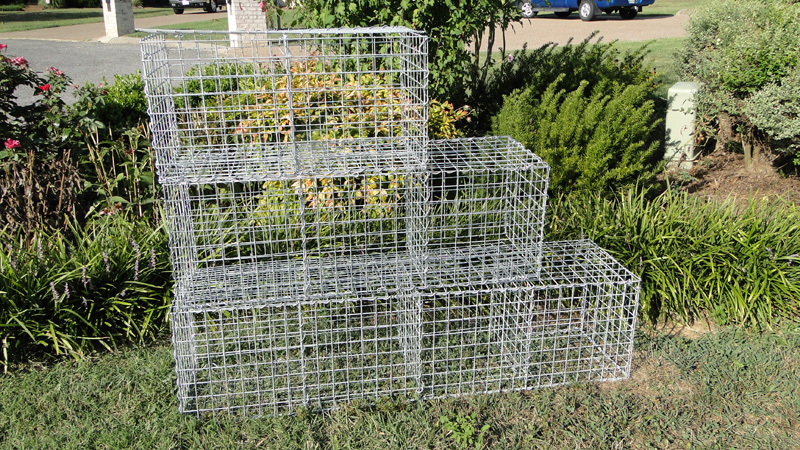
Gabions to strengthen steep banks
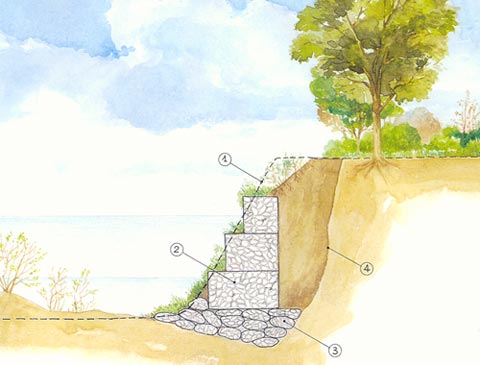
A section of a steep bank:
1. Updated shore profile
2. Gabions of rectangular structure
3. Cylindrical gabions
4. Erosion profile
Bioengineered reinforcement of shallow banks
Hopes that the shore of a freshly dug pond will gradually overgrow with grass itself are usually not justified. The process is long and not always ahead of erosion.
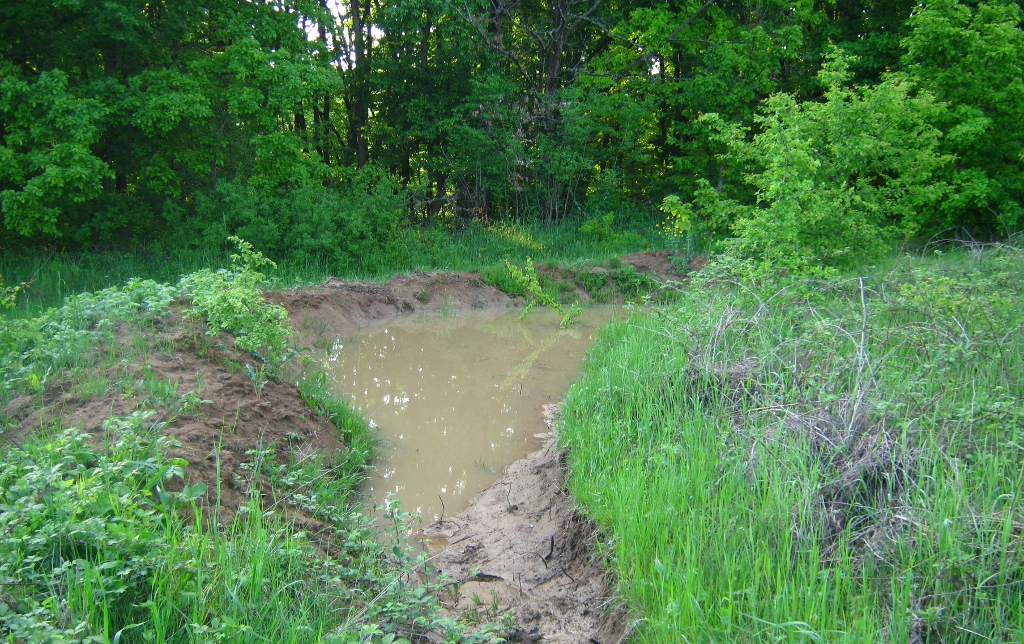
If the banks of the pond have a slope of less than 45 degrees, then you can try to strengthen them simply with the roots of grasses and shrubs planted directly in the ground, or better - on coconut fiber mats. While the roots grow, the mats will keep the soil from slipping, and then, they will rot, providing the soil with organic matter. Many people try to use geogrids by filling them with soil with lawn grass seeds. On some soils it is possible to achieve success. The banks are beautiful in appearance and pleasant to walk on, but usually they continue to erode along the water's edge, the level of which is constantly changing. In this case, the best solution is, again, gabions. More precisely, their flat modification is Reno mattresses. If desired, grass can also be sown on top of them.
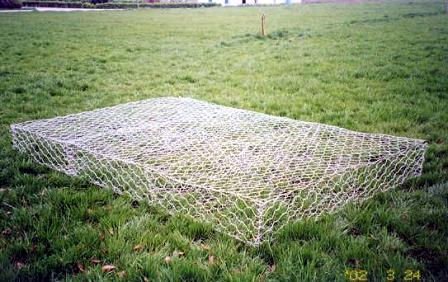
Reno mattress
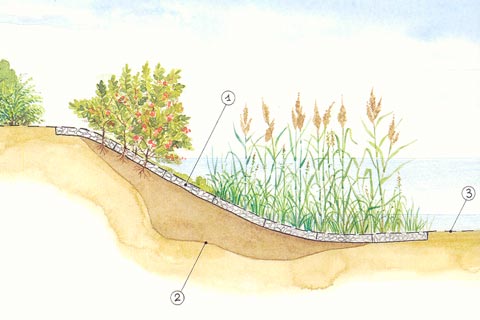
Slope of the shore
1. Reno Mattresses
2. Erosion profile
3. Updated shore profile
Andrey Udalov, amateur gardener (Krasnodar Territory)
2014 - 2016, . All rights reserved.

